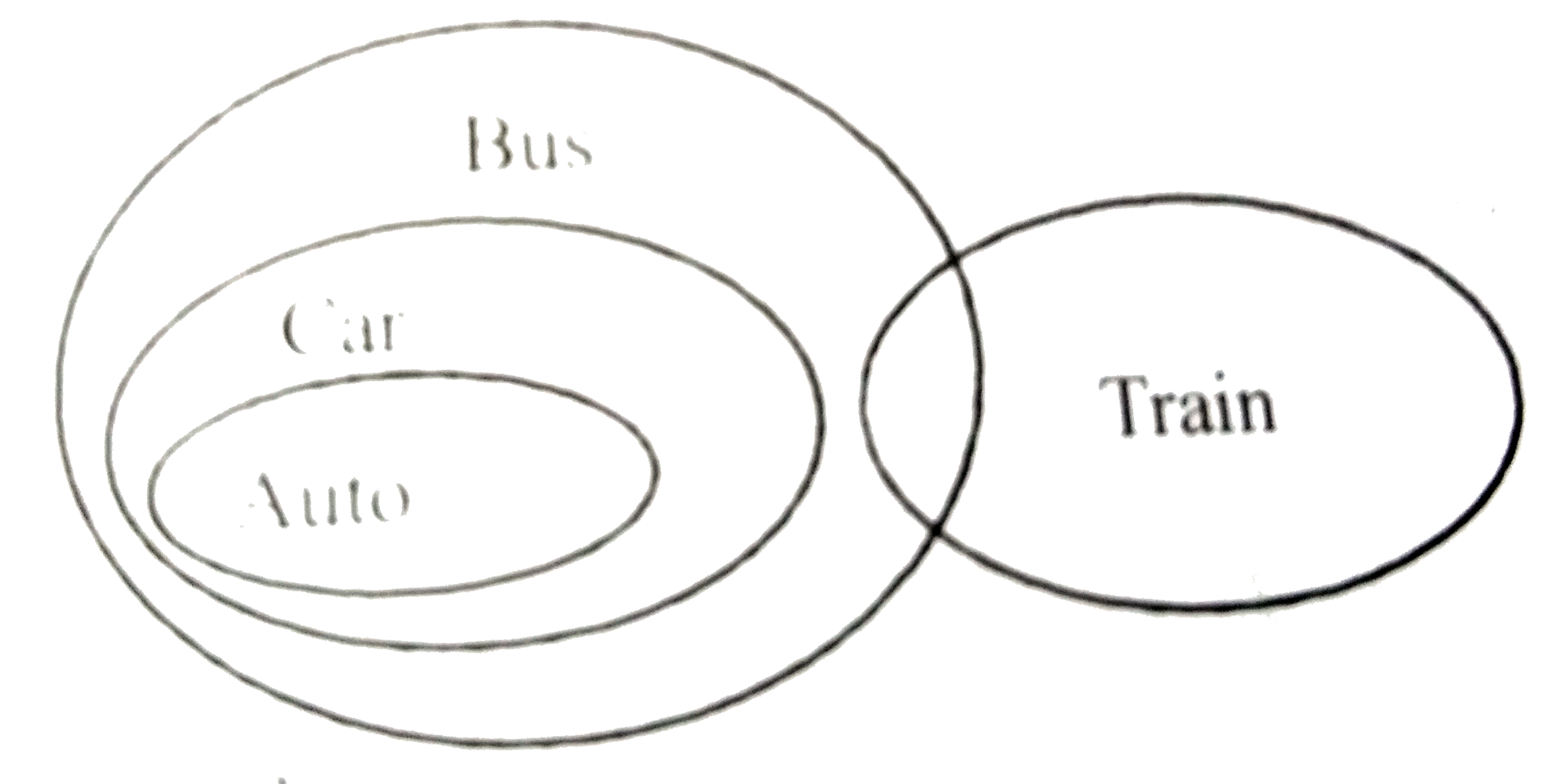Statement: Some bus are train. All cars are bus. All auto are car.
Conclusion: I. Some auto are train
II. Some car being train is a possibility
III. Some bus are not auto
both I and III follow
Either I or II follow
Only II follow
None follows
The correct Answer is:C
Topper's Solved these Questions
- SOLVED PAPER BOOK - IBPS & SBI PREVIOUS YEAR PAPERCHAPTER - SOLVED PAPER EXERCISE - Chapter 14 data sufficiency
10 Videos
- SOLVED PAPER BOOK - IBPS & SBI PREVIOUS YEAR PAPERCHAPTER - SOLVED PAPER EXERCISE - Chapter 16 Evaluating inference
3 Videos
- SOLVED PAPER BOOK - IBPS & SBI PREVIOUS YEAR PAPERCHAPTER - SOLVED PAPER EXERCISE - Chapter 11 Input output
16 Videos
- SERIESBOOK - IBPS & SBI PREVIOUS YEAR PAPERCHAPTER - SERIESEXERCISE - MCQ
23 Videos
- STATEMENT & ASSUMPTIONS BOOK - IBPS & SBI PREVIOUS YEAR PAPERCHAPTER - STATEMENT & ASSUMPTIONS EXERCISE - MCQS
33 Videos
Similar Questions
Statements:- Some cars are buses. All cars are caves.
Conclusions:- I. Some caves are not buses. II. Some caves are buses. III. No cave is a bus. IV. Some caves are cars.
View SolutionStatements:
Some tablets are rains
All dogs are rains
All rains are chairs
Conclusions:
I. Some chairs are tablets
II. All dogs are chairs
III. Some tablets are dogs
IV . Some tablets are chairs
View Solution
Knowledge Check
Statements:
Some cates are rates
Some rates are dogs
All dogs are goats
Conclusions:
I. Some dogs are rates
II. All cats being goats is a possibilityAIf only conclusion I followsBIf only conclusion II followsCIf either conclusion I or conclusion II followsDIf both conclusion I and conclusion II followsIn given question below are two statements followed by two conclusions numbered I and II. You have to take the given two statements to be true even if they seen to be at variance from commonly know facts. Read the conclusions logically follows the two given statement, disregarding commonly know facts.
Statements : Some hens are cows. All cows are horses.
Conclusions: I. Some horses are hens.
II. Some hens are horses.
Give answer
(a) if only conclusion I follows,
(b) if only conclusion II follows,
(c) if either conclusion I or II follows,
(d) if neither conclusion I nor II follows,
(e) if both conclusion I and II follows.Aif only conclusion I followsBif only conclusion II followsCif either I or II followsDif neither I nor II follows andStatements: Some snakes are birds.
All cats are birds
Conclusions : I some cats are snakes.
II Some birds are snakes.Aif only conclusion I followsBif only conclusion II followsCif either I or II followsDif neither I nor II follows and
Statement: Some rooms are stones.
All stones are radios.
Conclusions: I. Some rooms are radios.
II. Some stones are rooms.c
View SolutionConsider the given statements to be true and decide which of the given Conclusions/assumptions can definitely be drawn from the given statements.
Statements :
Some cars are buses.
All cars are caves.
Conclusions :
I. Some caves are not buses.
II. Some caves are buses.
III. No cave is a bus.
IV. Some caves are cars.
View SolutionStatements: All chairs are tables. All tables are bottles . Some bottles are jars. Is bucket.
Conclusions:
I. Some tables being jar is a possibility
II. Some bottles are chairs
III. Some bottles are not bucket
View SolutionStatements:
Some trees are tall
All tall are healthy
all healthy are not all
Conclusions:
I. Some healthy are tall
II. Some treese are not tall.
View SolutionIn given question below are two statements followed by two conclusions numbered I and II. You have to take the given two statements to be true even if they seen to be at variance from commonly know facts. Read the conclusions logically follows the two given statement, disregarding commonly know facts.
Statements : Some hens are cows. All cows are horses.
Conclusions: I. Some horses are hens.
II. Some hens are horses.
Give answer
(a) if only conclusion I follows,
(b) if only conclusion II follows,
(c) if either conclusion I or II follows,
(d) if neither conclusion I nor II follows,
(e) if both conclusion I and II follows.
View Solution

